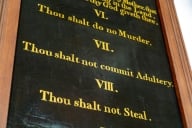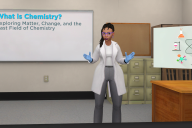You have /5 articles left.
Sign up for a free account or log in.
Michael Bassis prepared for retirement much the same way his students at Westminster College are prepping for their careers: by making an e-portfolio.
His motives for making an online collection of his work were twofold. He saw the project first as a chance to reflect on his 41 years in higher education, including the last 10 as president of Utah’s Westminster College, but also as a way to communicate to students and faculty members his steadfast belief in electronic portfolios as a method of cataloging and assessing student work.
Westminster spent years studying e-portfolios before developing a rubric and assigning the mandatory four-year project to its most recent entering class. Bassis hopes the e-portfolio focus attracts students to Westminster, and that his own efforts highlight just how committed the college is to the project. “I think it will make a statement to our students as well as our faculty that this is important work,” he said.
It’s rare that administrators make their own online portfolio, said Trent Batson, executive director of the e-portfolio trade group, the Association for Authentic, Experiential & Evidence-Based Learning. Batson’s group works with universities around the world to implement e-portfolio projects, but he isn’t aware of other presidents taking the time to create their own. Doing so demonstrates support to faculty members who might encounter student resistance to the project.
“In a sense, President Bassis provided cover for faculty and the institution to do something a little different involving e-portfolios,” Batson said.
Take Our Reader Survey
Help us be better. Tell us
what you like (and don't)
about Inside Higher Ed.
Click here to participate.
Bassis’ tenure at the liberal arts college in Salt Lake City ends this summer. He isn’t sure what he’ll do next, but he has used the e-portfolio to take a frank look at his career and life as he plots his next move.
The president spent two months’ worth of evenings and weekends creating his Web page, assembling old photos and pieces of writing and combining those with several written and video reflections produced specifically for the portfolio. He invites those who read his expansive portfolio to use the college's rubric to give him a grade.
Bassis expected the process to be valuable, a way to examine his strengths and weaknesses and articulate his successes and regrets. After all, that’s why Westminster instituted the requirement for students. But he was skeptical of the claims of some of the most ardent e-portfolio supporters, namely that assembling his work would reveal links between different facets of his life that would help him learn about who he is.
“The experts about e-portfolios had said that students are going to gain new insights into their own character and behavior and make connections among personal attributes and start to recognize emerging themes,” he said. “That was pushing the expectations a bit too far, I thought. But as I started to do the e-portfolio, that’s exactly what happened.”
Among the themes Bassis saw was his competitive drive, which was nurtured as a lacrosse player at Brown University. He said those tendencies, good or bad, persisted in his time at Westminster. “I know the absolute necessity of working collaboratively with members of one’s own team, much like the crew of a racing sailboat must do,” he wrote in his portfolio. “But I have this inner voice that tells me to try to get ahead, and stay ahead, of the other team. As Westminster’s president, the other team consists of colleges of our kind across the country and every college and university within the local region.”
But with that competitive drive comes the necessity for realistic measurement. Westminster’s basketball team, for example, is unlikely to beat Duke. “But can’t I expect our team to earn higher GPAs and to exhibit better sportsmanship than those at Division I schools?” Bassis writes.
Bassis’ portfolio chronicled his early days as a faculty member at the University of Rhode Island, where his frustration that more wasn’t being asked of students inspired him to become an administrator. Reflecting on his time at Westminster, Bassis wrote of his pride in developing a strategic plan that has been almost fully implemented, but expressed regret that, despite some progress during his tenure, the campus isn’t as diverse as he’d like.
Being honest in that assessment was important, Bassis said, especially if he wants students to reflect on hard truths in their own portfolios.
“There aren’t many times college presidents make themselves vulnerable by admitting mistakes,” he said. “It’s been difficult for me. But I knew that if this was going to work, I had to be honest with myself.”
He also saw a sense of duty in making an e-portfolio, especially considering his college’s new emphasis on the projects. Faculty and administrators have taken their share of courses and exams, he said, but few have made e-portfolios. He believes doing so creates an important element of empathy.
But not everybody is enthused about the projects. David Jones, a senior lecturer at Australia’s University of Southern Queensland, has blogged about his distaste for e-portfolios. As part of his graduate work, Jones had to make his own e-portfolio last year, but remains skeptical of their educational value.
While they might be useful in the abstract, he wrote in an e-mail to Inside Higher Ed, they’re often implemented in a way that emphasizes the creation of the portfolio instead of the learning that’s supposed to be taking place.
Batson acknowledges that e-portfolios can be distracting in traditional classrooms, but suggests they can be part of a more effective learning model that focuses on an individual student’s progress. From Bassis' perspective, at least, the early results at Westminster seem to support that idea.
“I’m hard-pressed,” he said, “to identify an activity that has more educational value than building an e-portfolio the way it’s being done at Westminster.”







